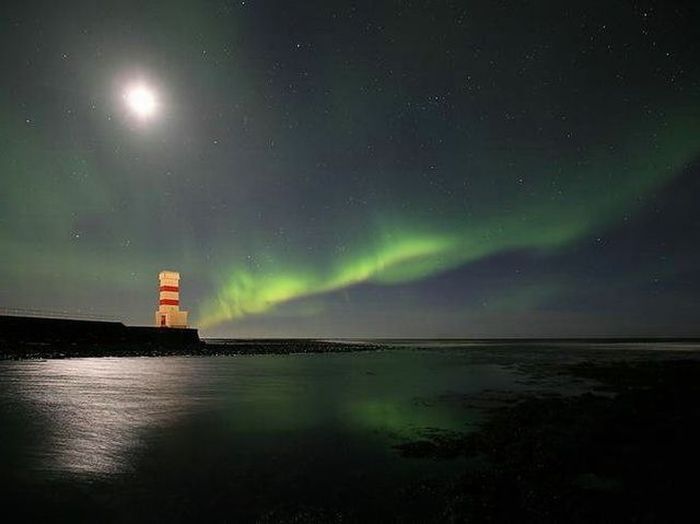|
|
Aurora, Amazing Northern Lights
|
Other types of auroras have been observed from space, e.g. "poleward arcs" stretching sunward across the polar cap, the related "theta aurora", and "dayside arcs" near noon. These are relatively infrequent and poorly understood. There are other interesting effects such as flickering aurora, "black aurora" and subvisual red arcs. In addition to all these, a weak glow (often deep red) has been observed around the two polar cusps, the "funnels" of field lines separating the ones that close on the day side of Earth from lines swept into the tail. The cusps allow a small amount of solar wind to reach the top of the atmosphere, producing an auroral glow.
On other planets
Both Jupiter and Saturn have magnetic fields much stronger than Earth's (Jupiter's equatorial field strength is 4.3 gauss, compared to 0.3 gauss for Earth), and both have large radiation belts. Auroras have been observed on both, most clearly with the Hubble Space Telescope. Uranus and Neptune have also been observed to have auroras.
|
|









